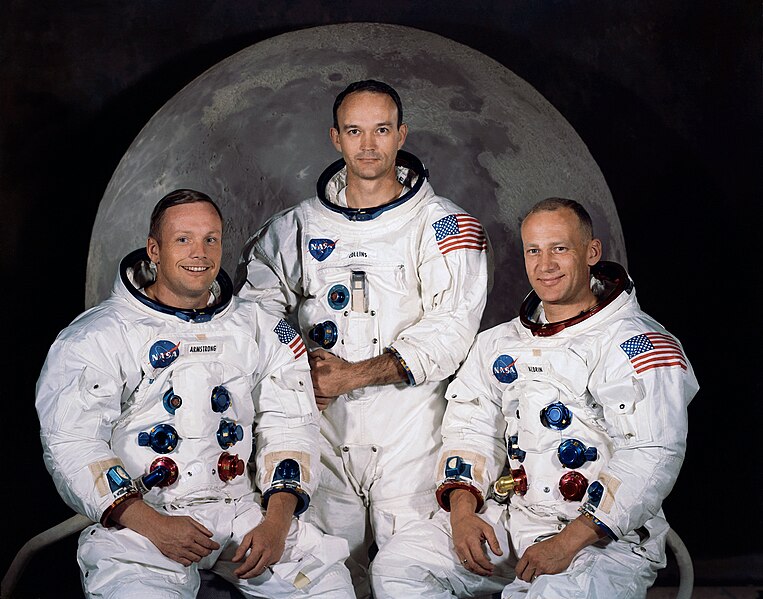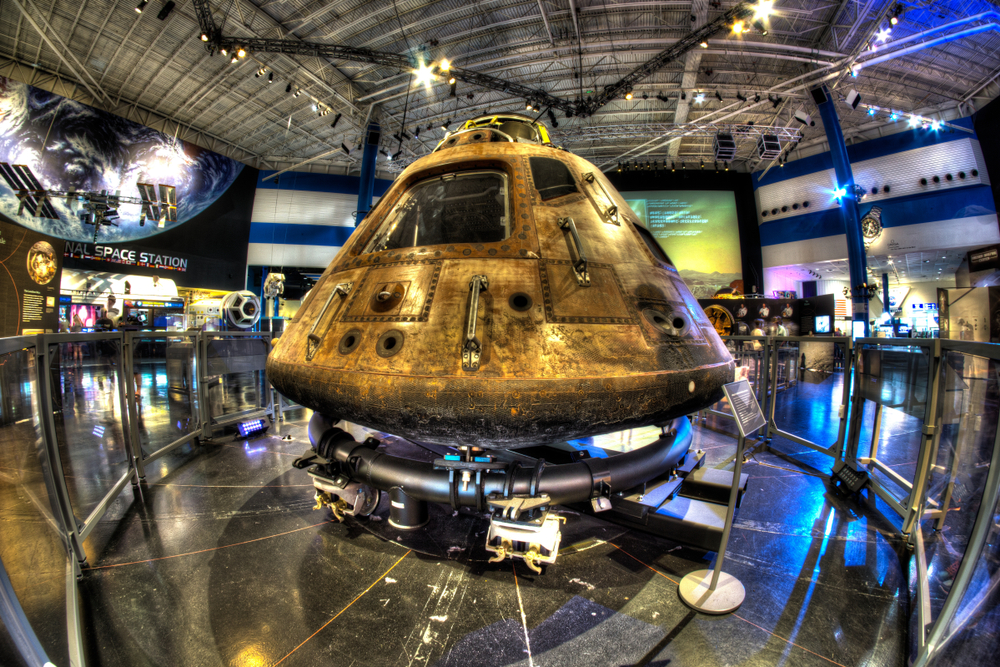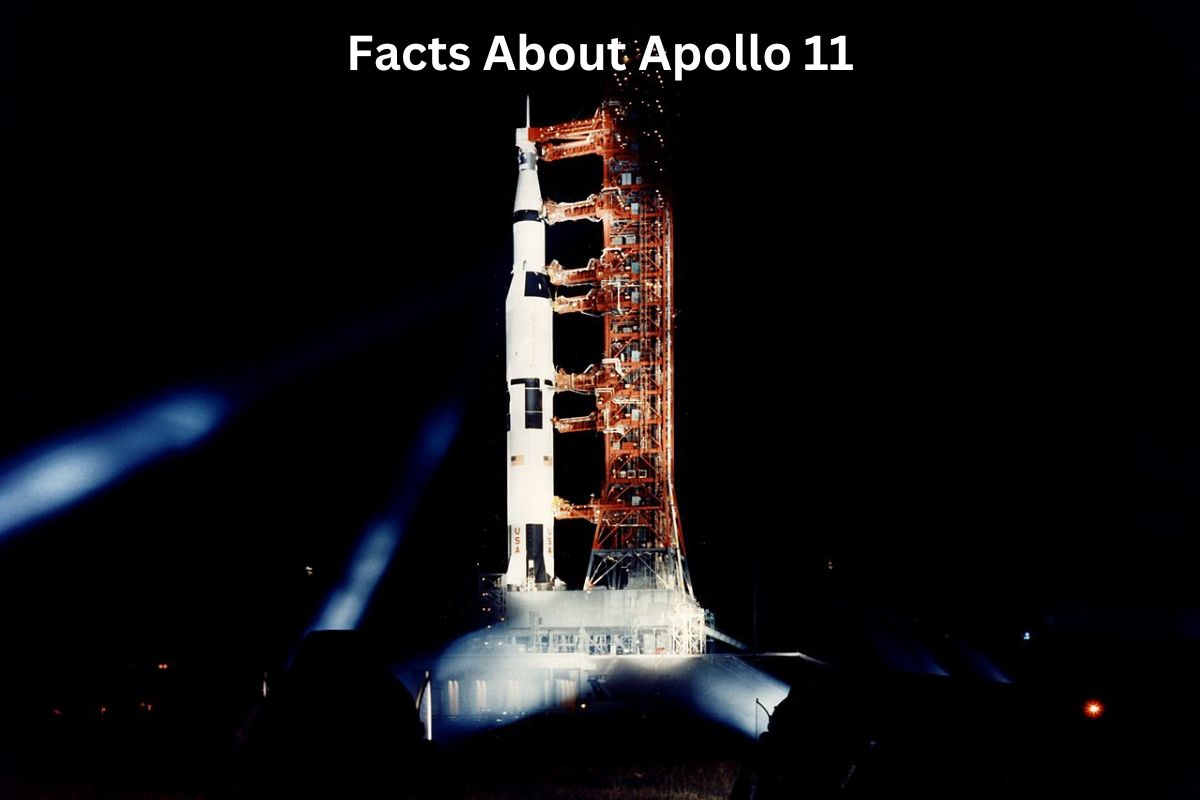Apollo 11 was a historic NASA mission that achieved the remarkable feat of landing humans on the Moon and safely returning them to Earth in 1969.
This mission marked a pivotal moment in human history, showcasing the capabilities of space exploration and fulfilling the ambitious goal set by President John F. Kennedy.
Led by astronauts Neil Armstrong, Buzz Aldrin, and Michael Collins, Apollo 11 remains an enduring symbol of human ingenuity and determination in the pursuit of scientific discovery and space exploration.
Apollo 11 Facts
1. Mission Objective: Land humans on the Moon and return them safely
The primary objective of Apollo 11 was to achieve the historic feat of landing humans on the Moon for the very first time.
Also Read: Facts About the Apollo Space Program
This mission aimed to demonstrate the United States’ technological prowess and its commitment to space exploration during the intense space race of the 1960s, which was a competition between the United States and the Soviet Union.

2. Crew: Neil Armstrong, Buzz Aldrin, and Michael Collins
Apollo 11 was crewed by three astronauts who played specific roles in the mission:
- Neil Armstrong: Neil Armstrong was the mission commander and the first human to set foot on the lunar surface. His role was crucial in piloting the lunar module to a safe landing on the Moon.
- Buzz Aldrin: Buzz Aldrin served as the lunar module pilot. He descended to the Moon’s surface alongside Neil Armstrong and conducted experiments, collected samples, and assisted with the lunar module’s operations.
- Michael Collins: Michael Collins was the command module pilot, responsible for piloting the command module, named “Columbia,” which orbited the Moon while Armstrong and Aldrin explored the lunar surface. Collins played a vital role in reuniting the crew for their return to Earth.
3. Launch Date: July 16, 1969
Apollo 11’s historic journey began with its launch from Kennedy Space Center in Florida on July 16, 1969. The Saturn V rocket carried the Apollo spacecraft into Earth orbit, setting the stage for the trans-lunar injection that propelled the spacecraft toward the Moon.
Also Read: Timeline of Apollo 11
This launch marked the start of the eight-day mission that would culminate in the historic lunar landing. The launch of Apollo 11 was witnessed by millions of people around the world, making it a momentous and widely celebrated event in human history.

4. Moon Landing: July 20, 1969
The most iconic moment of the Apollo 11 mission occurred when the lunar module, named “Eagle,” touched down on the Moon’s surface on July 20, 1969. Neil Armstrong and Buzz Aldrin piloted the lunar module to a successful landing in the Moon’s Sea of Tranquility, a relatively flat and smooth area chosen for its safety.
The landing was a tense and critical moment, as the lunar module had limited fuel, and Armstrong had to manually navigate to avoid landing in a rocky area.
It was during this phase that the famous words were spoken by Neil Armstrong as he stepped out onto the lunar surface: “That’s one small step for [a] man, one giant leap for mankind.”
5. Lunar Module: Named “Eagle”
After landing on the Moon, Neil Armstrong and Buzz Aldrin conducted several activities during their approximately 2 hours and 15 minutes of Extravehicular Activity (EVA).
They deployed scientific instruments, collected rock and soil samples, took photographs, and conducted experiments related to the lunar environment and gravity.
Their activities provided valuable data for scientific research and confirmed that humans could operate effectively on the lunar surface.
6. Lunar Module Liftoff: July 21, 1969
The lunar module’s ascent stage successfully lifted off from the Moon’s surface on July 21, 1969, carrying Neil Armstrong and Buzz Aldrin back to lunar orbit.
The ascent stage rendezvoused and docked with the command module, piloted by Michael Collins, who had been orbiting the Moon alone during their lunar exploration. This reunion in lunar orbit marked a critical phase of the mission, ensuring the safe return of the entire crew to Earth.

7. Safe Return: Splashdown on Earth on July 24, 1969
After a journey of approximately 240,000 miles (386,242 kilometers), the Apollo 11 command module, named “Columbia,” successfully re-entered Earth’s atmosphere on July 24, 1969.
The spacecraft reached a speed of about 25,000 miles per hour (40,000 kilometers per hour) during re-entry, and its heat shield protected it from the intense heat generated by atmospheric friction.
The crew experienced a period of radio blackout as they descended, but contact was reestablished as they parachuted into the Pacific Ocean. The spacecraft splashed down safely about 812 nautical miles (1,500 kilometers) southwest of Hawaii, marking the end of their mission.
8. Duration: 8 days, 3 hours, 18 minutes, and 35 seconds
The entire Apollo 11 mission lasted 8 days, 3 hours, 18 minutes, and 35 seconds, from the moment of liftoff to the moment of splashdown.
During this relatively short duration, the crew achieved one of the most significant accomplishments in human history by landing on the Moon and returning safely to Earth.
9. Moon Rocks: Collected 47.5 pounds of lunar samples
Apollo 11 brought back a total of 47.5 pounds (21.5 kilograms) of lunar rock and soil samples from the Moon’s surface. These samples provided scientists with valuable insights into the Moon’s geological history and composition. The analysis of these rocks also helped confirm that the Moon formed from the debris of a giant impact with Earth billions of years ago.
10. Historic Achievement
Apollo 11 remains one of the most iconic and historic achievements in human space exploration. The mission’s success was not only a testament to the scientific and engineering capabilities of NASA but also a source of inspiration for generations to come.
It marked a significant milestone in the Space Race between the United States and the Soviet Union, with the United States achieving the goal set by President John F. Kennedy in 1961 to land a man on the Moon and return him safely to Earth before the end of the decade.
Apollo 11 demonstrated the ability of humans to venture beyond Earth and laid the groundwork for subsequent lunar missions and the continued exploration of space.
